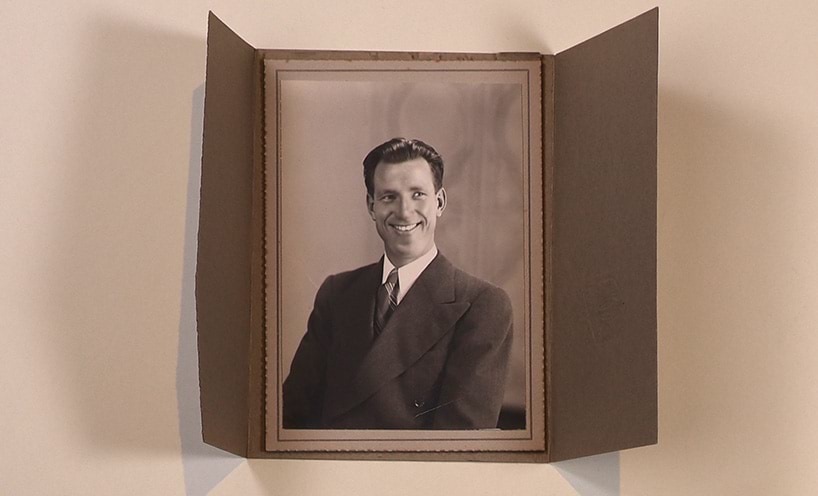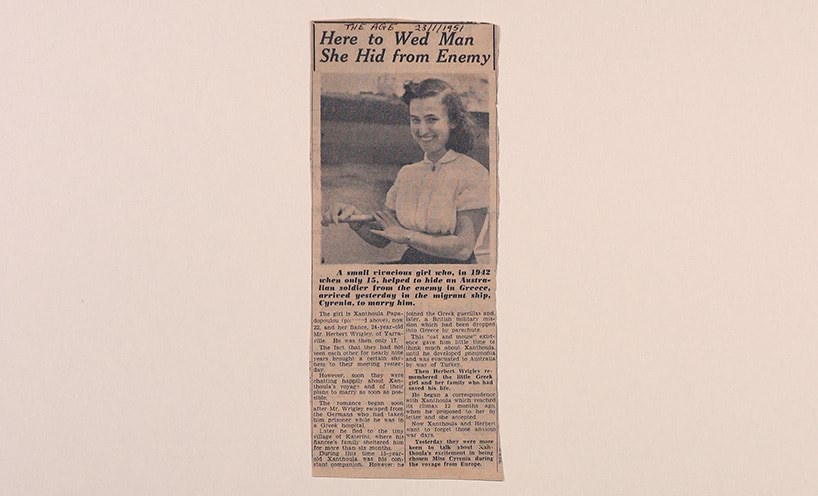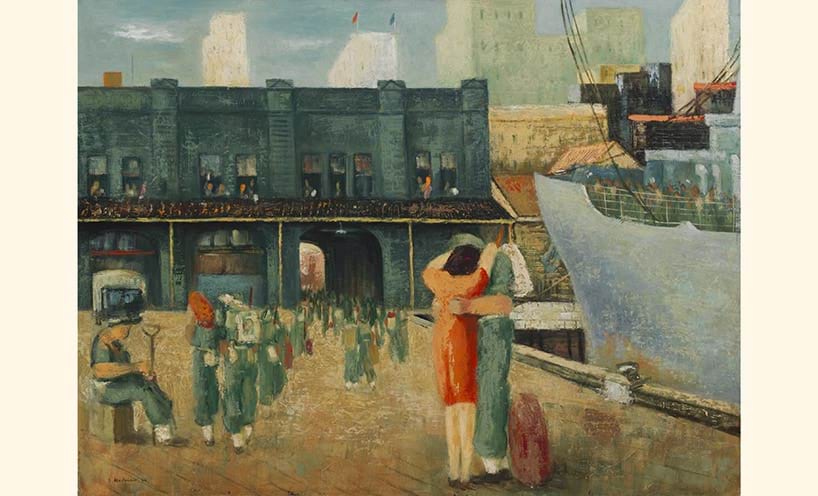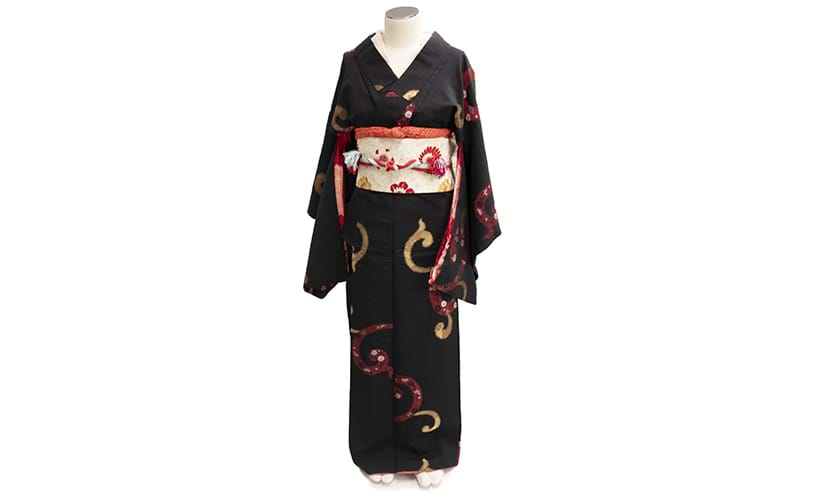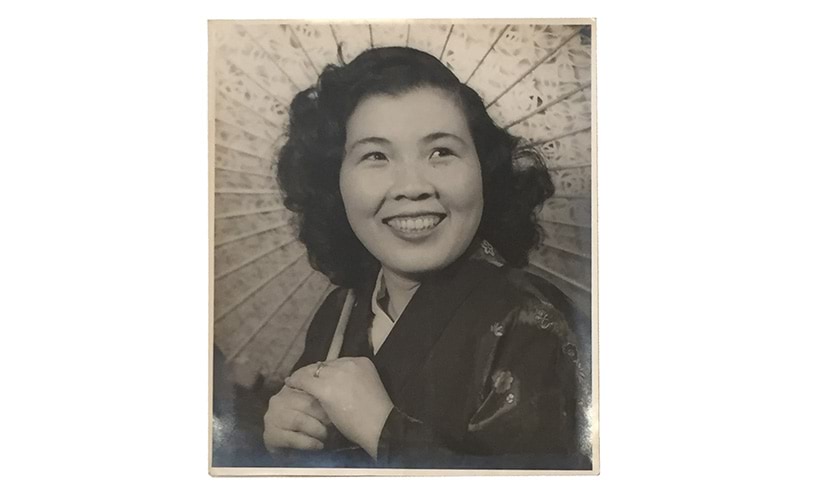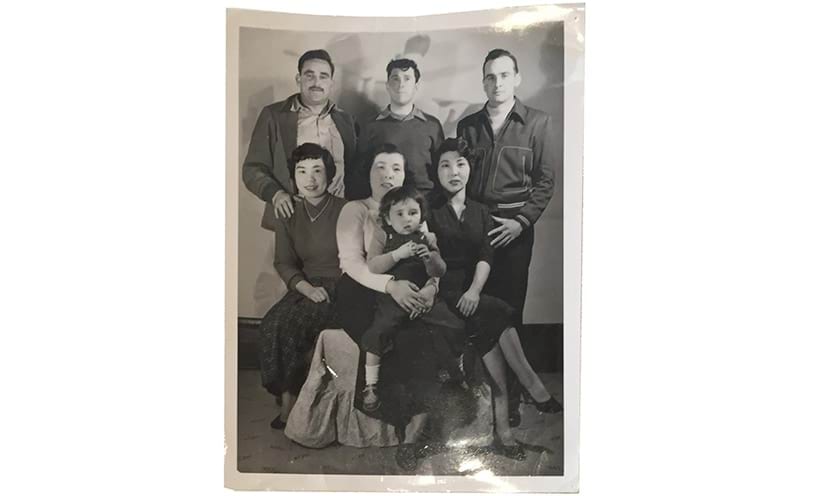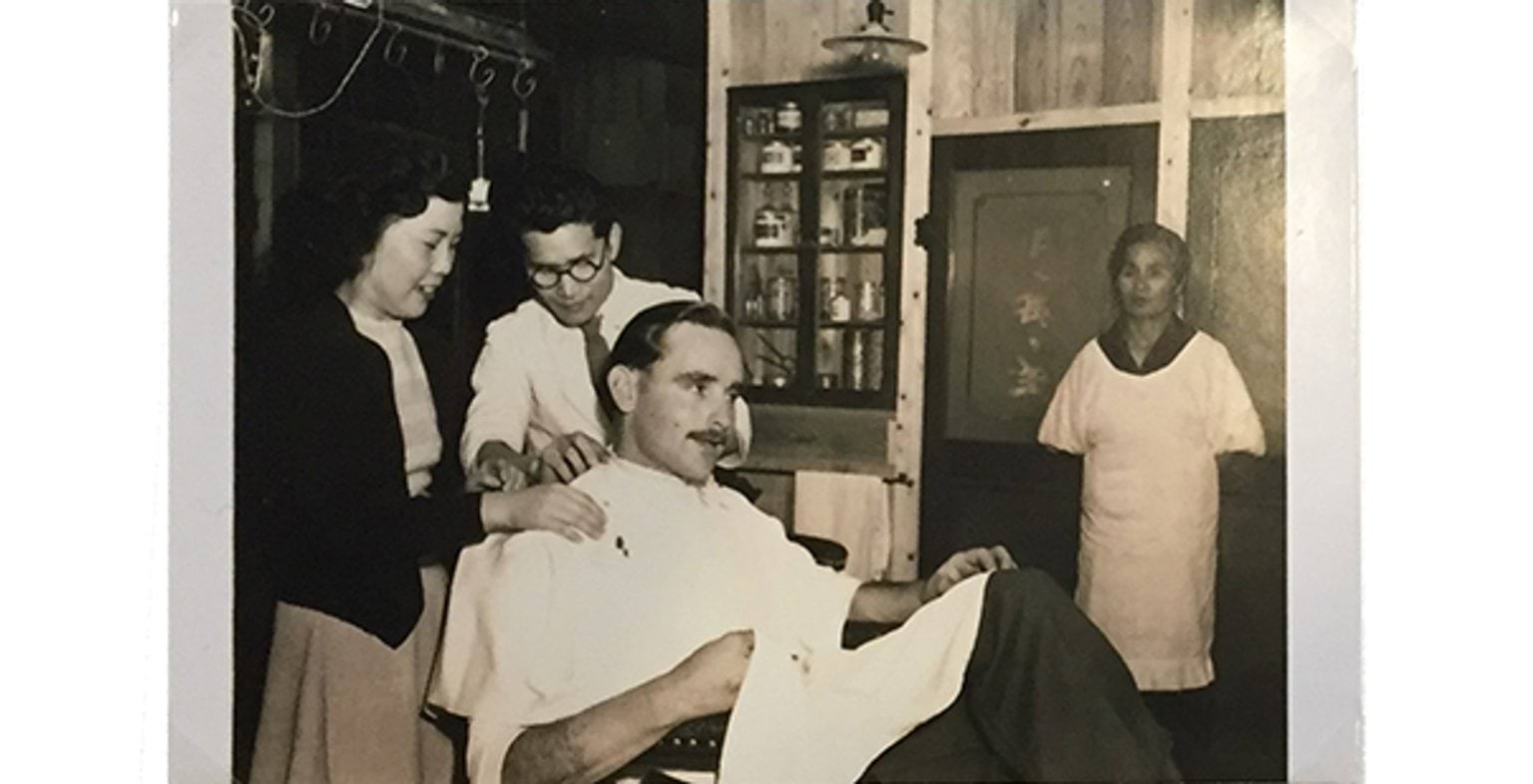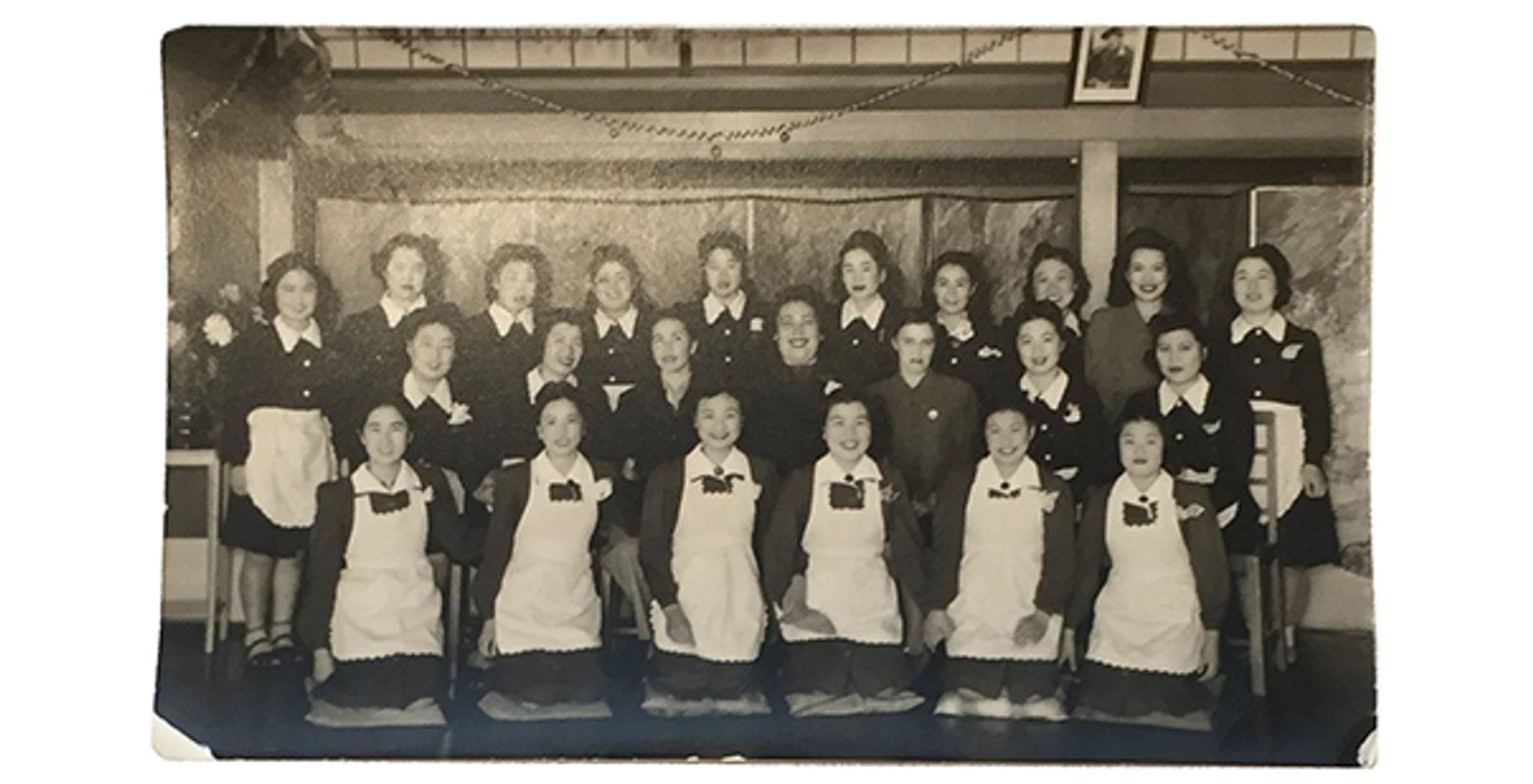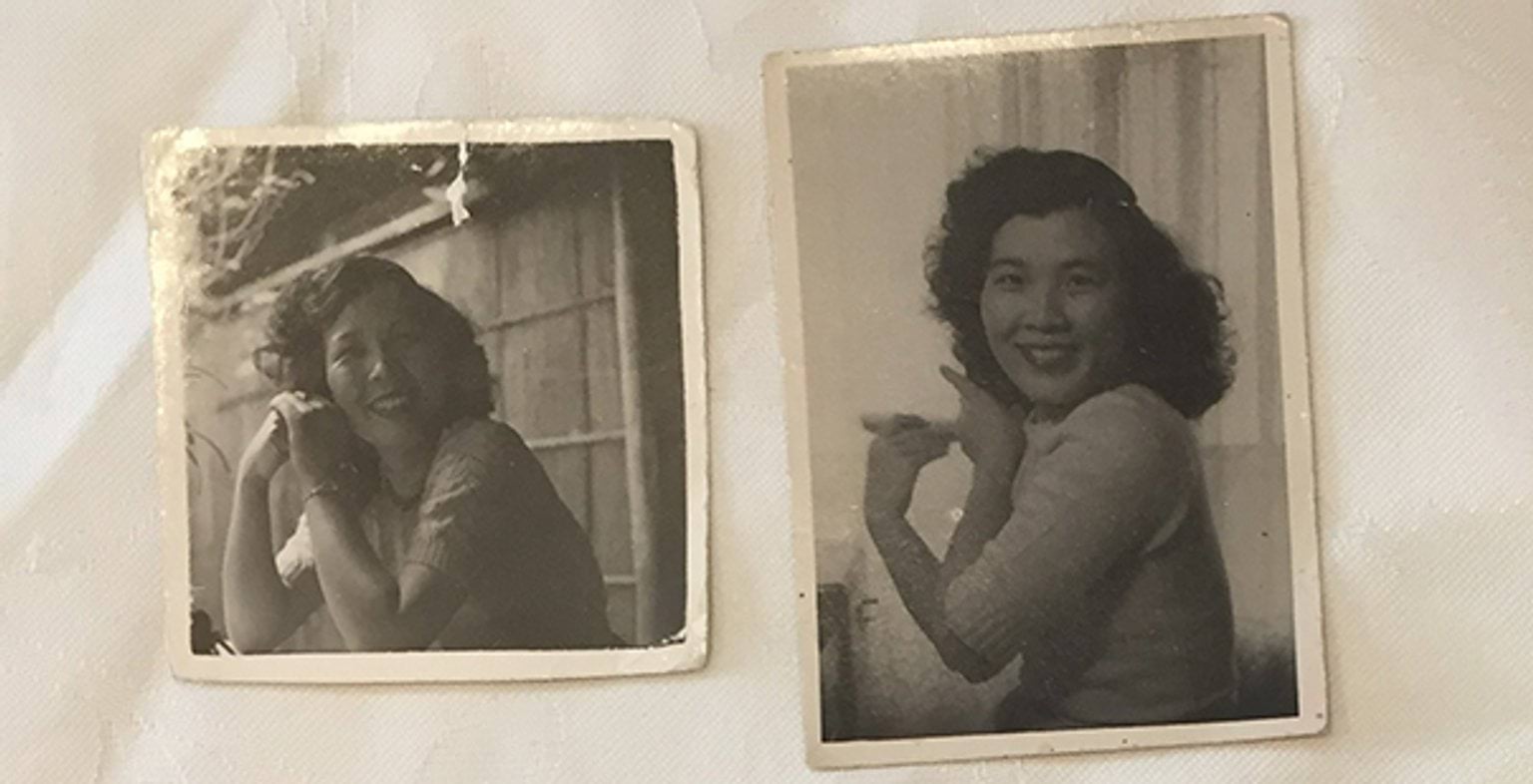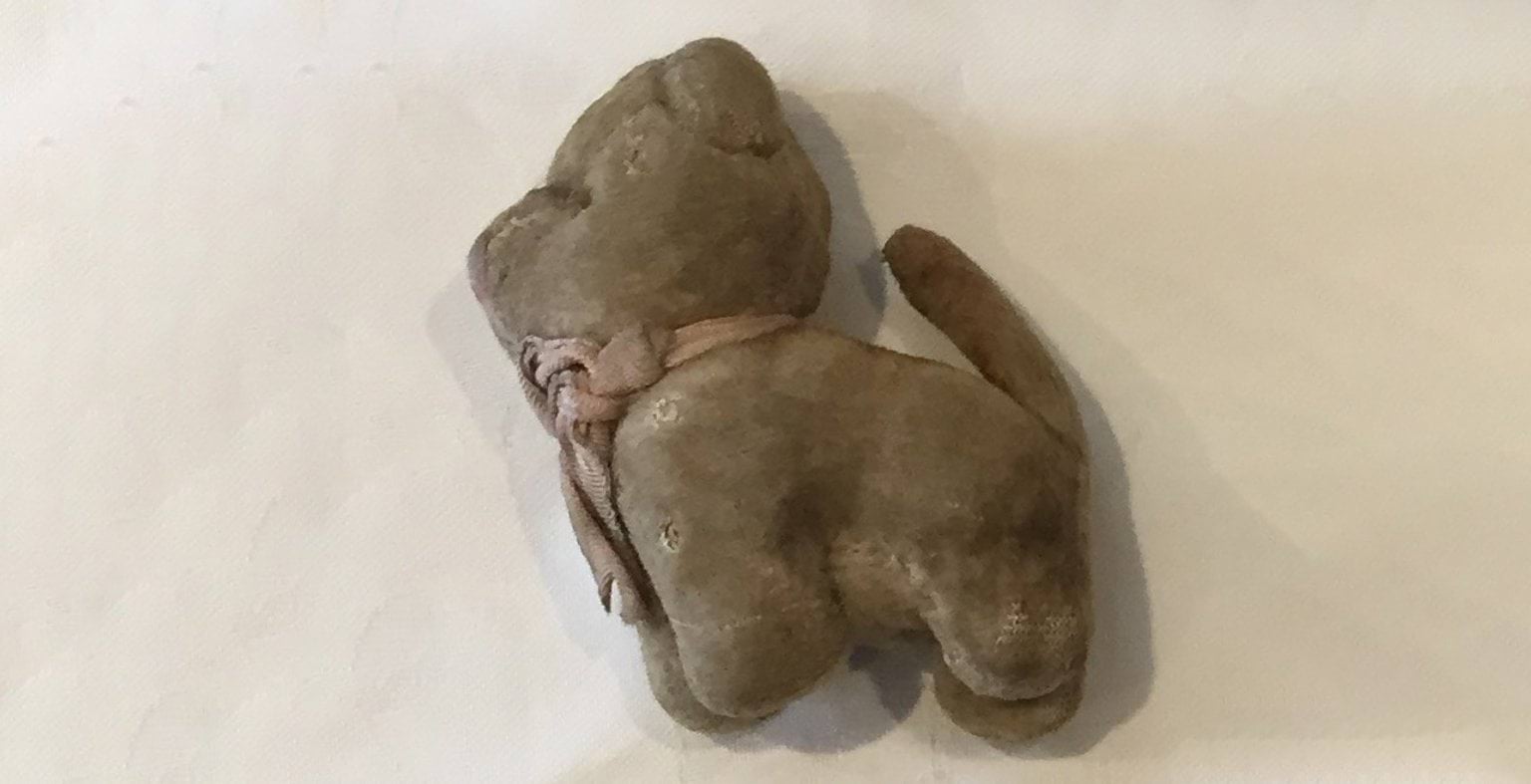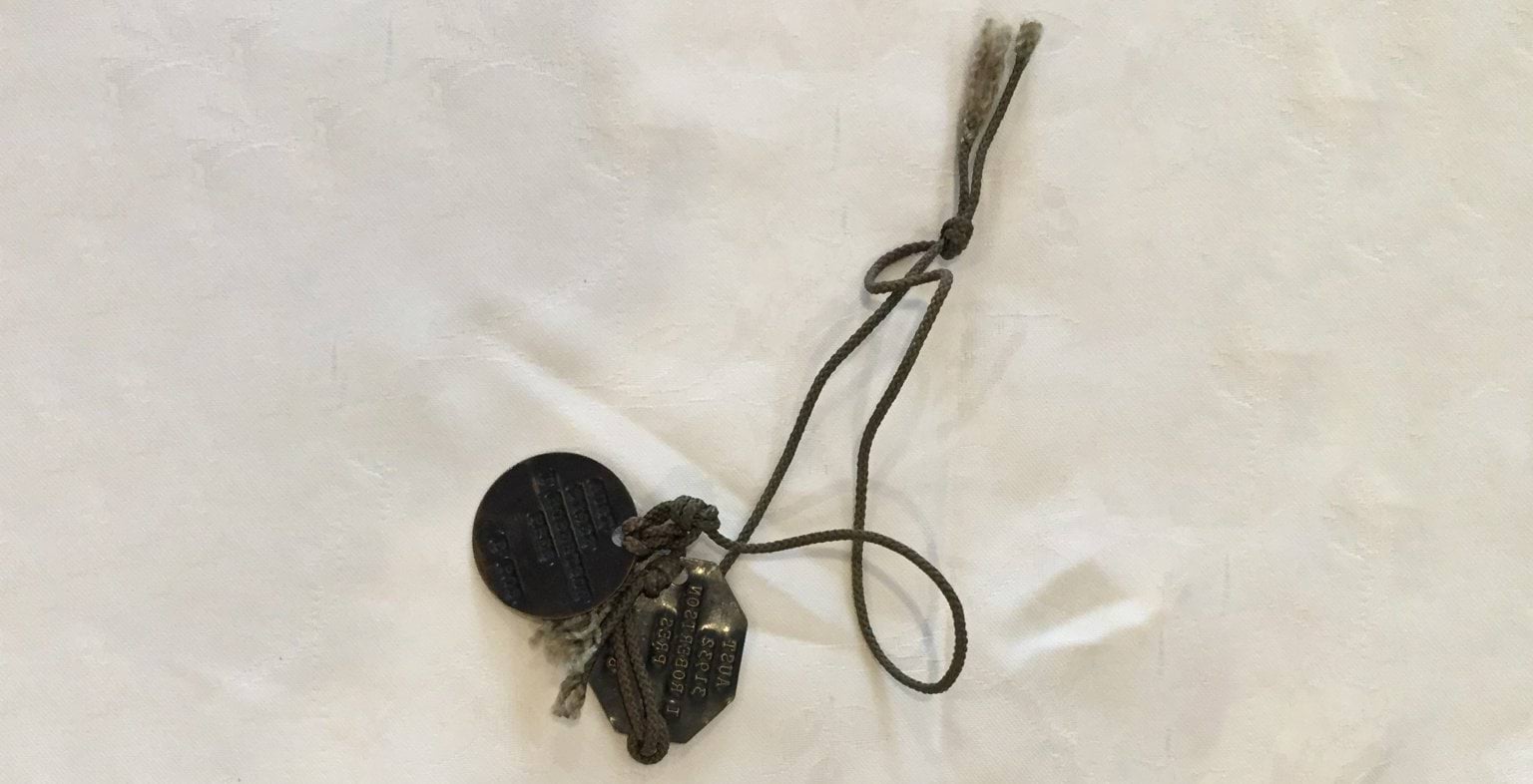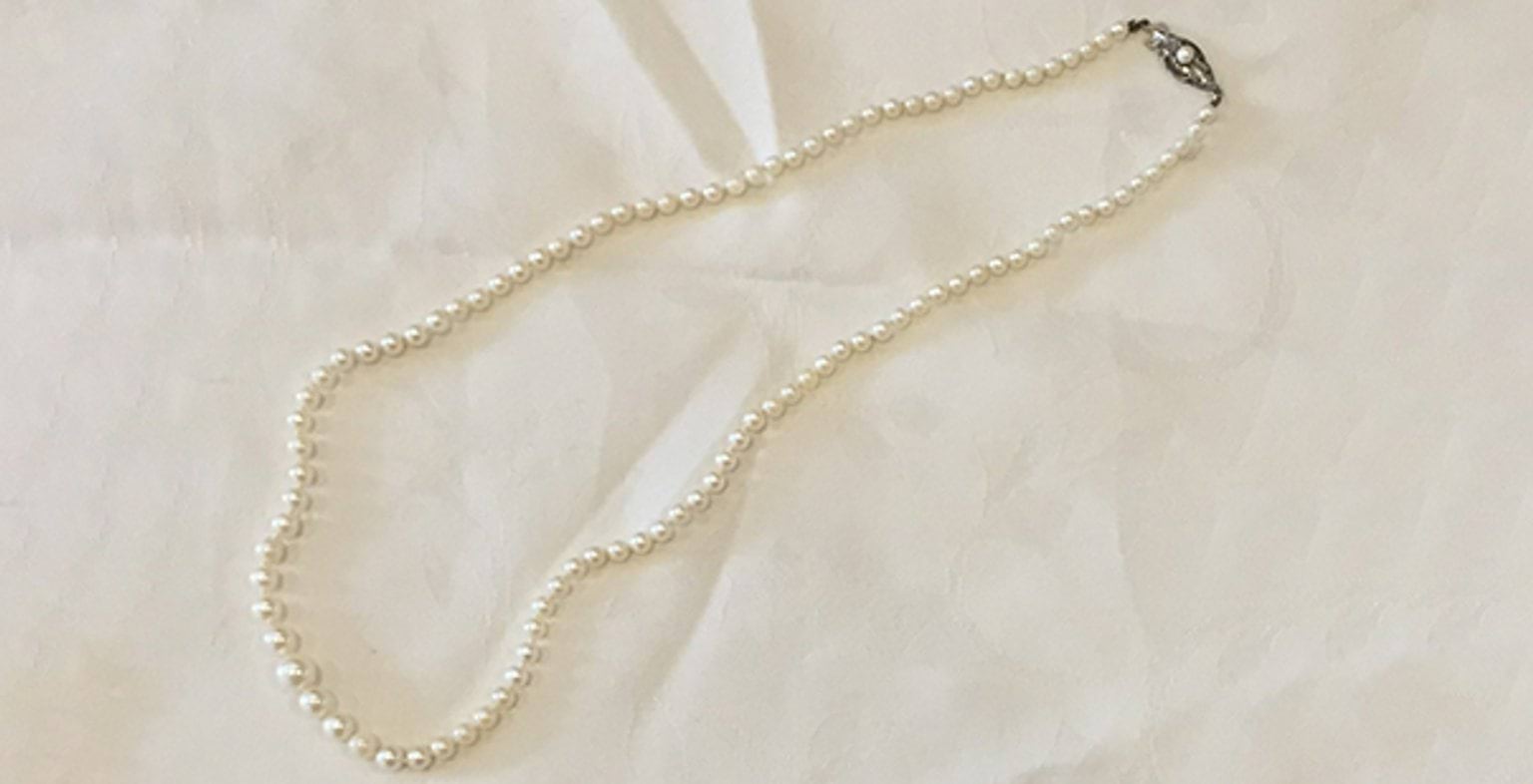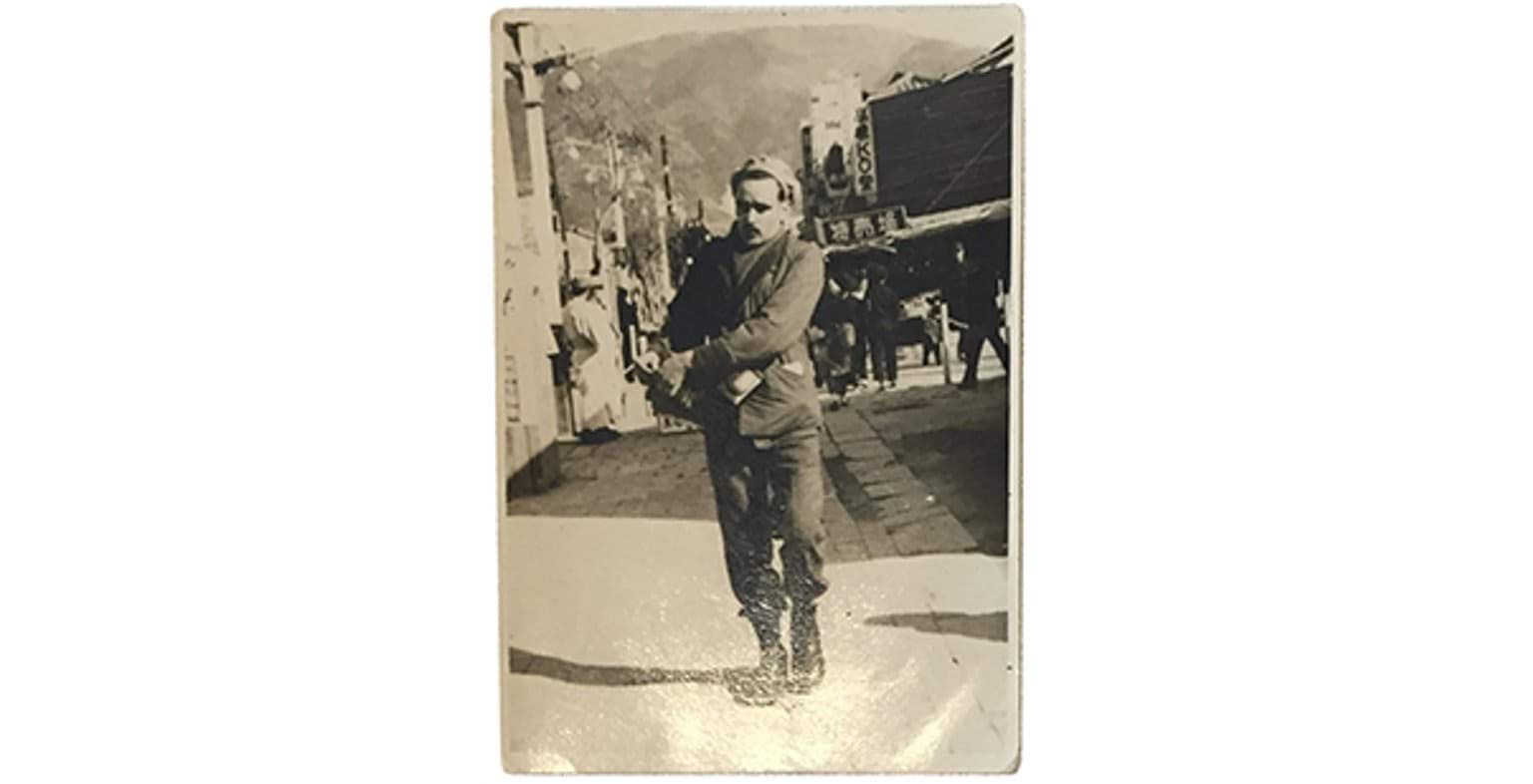War’s end provides demobilised service personnel, displaced persons and ‘war brides’ with a chance to re-establish an existing relationship, or forge ahead with a new one.
The transition is seldom easy.
Adapting to war’s destructive aftermath tests even the most committed couples.
An address scrawled on a slip of paper led to love...
Studio portrait of Herbert ‘Slim’ Wrigley 1950
‘Here to Wed Man She Hid from Enemy’ 23 January 1951
Back home January 1946
by Herman Sali (1898–1993)
War’s end can signal new beginnings for a couple – or a relationship’s end.
Divorce rates in Australia rose dramatically in the years immediately following both world wars and some 38% of Vietnam veterans’ marriages failed within 6 months of their repatriation.
Veterans of modern wars continue to struggle. Without support, some individuals – restless, traumatised or alienated – may neglect, abuse or desert their significant others.
Long periods of self-sufficiency, meanwhile, may give their spouses confidence to contemplate life alone.
Now don’t forget—you’re only a mascot! 1943
by Joan Morrison (1911–69)
Joan Morrison was one of Australia’s most successful pin-up artists and often trod a fine line between parody and pandering to her audience’s prejudices. The gormless Second World War digger in this pin-up symbolises an entitled and triumphalist mindset of a nation that has reasserted itself as a colonial master and a victor in war. His Papuan ‘mascot’ can be seen as a metaphor—representing, among other things, the sexual experience amassed by Australian servicemen during their military service.
One of hundreds of unsanctioned loves between Australian soldiers and their Japanese fiancées...
Traditional kimono
Brought to Australia by Motoe Robertson in 1954
Portrait of Motoe Robertson
Photographer Ian Robertson
This portrait of Motoe Robertson was taken by Ian Robertson for his camera club soon after his and Motoe’s arrival in Australia.
Kokeshi dolls c 1940
Brought to Australia by Motoe Higashida
Ian and Motoe Robertson with their friends 1956
Photographer Ian Robertson (with timer).
Ian and Motoe's courting years
Updated

